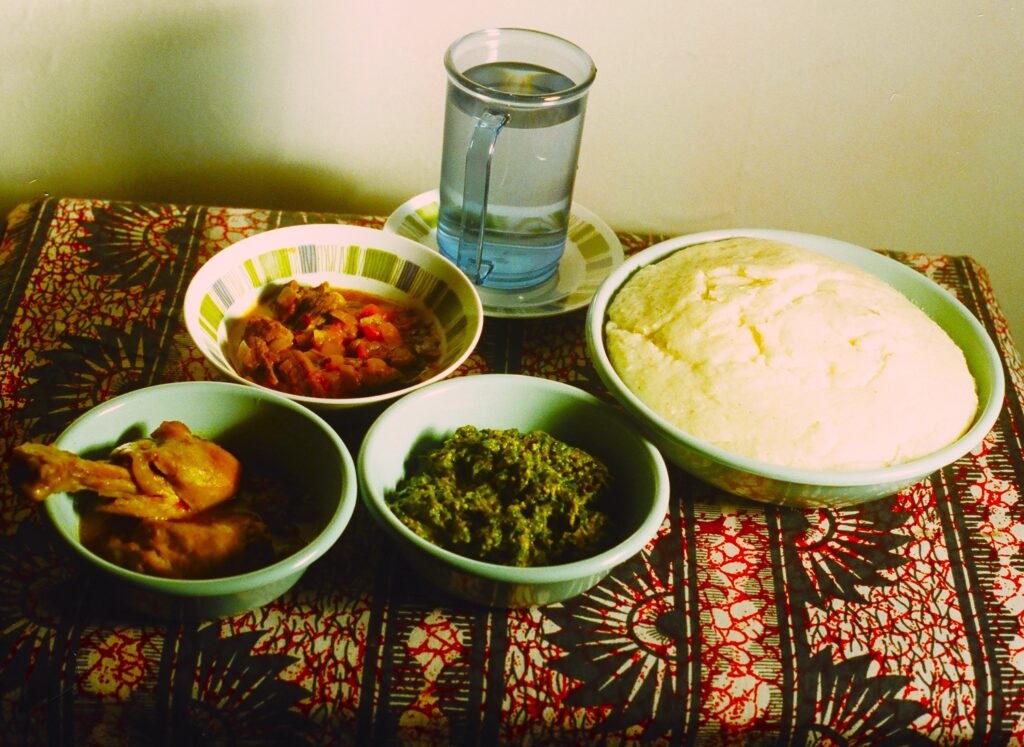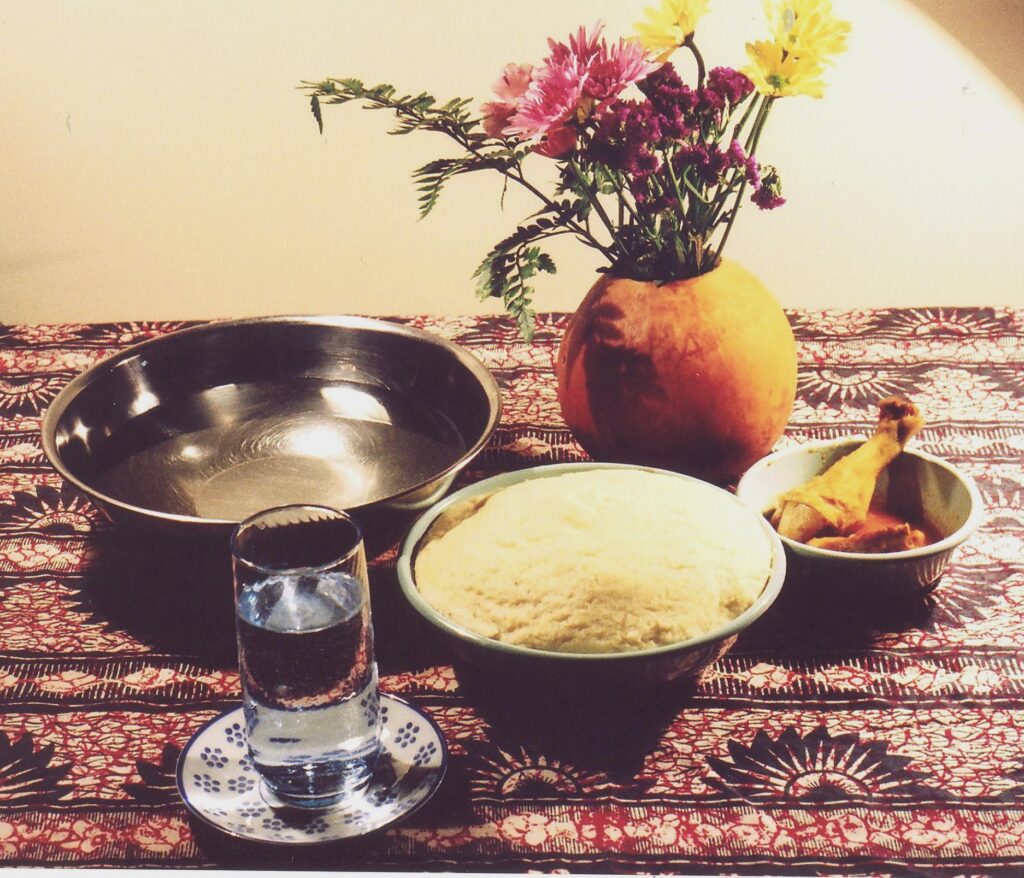by
Mwizenge S. Tembo, Ph. D.
Emeritus Professor of Sociology
For 19 million Zambians in Southern Africa, nshima and what it stands for is the very basis of life. Nshima is the staple food eaten by not only Zambians but Malawians and many other African neighbors. Almost all 72 tribes and indigenous African languages in Zambia probably call nshima by a different name according to the specific area language and dialect variation. The Chewa, Tumbuka, and Ngoni of Eastern Zambia and Malawi call it sima or nsima, the Bemba of Northern Zambia call it ubwali, the Tonga of Southern Zambia call it insima and Lozi of Western Zambia call it buhobe.

There is a saying that Eskimos who live in the frozen north pole may have many different definitions of snow. This reality of having so many definitions may be true for people who live in the desert and how they define sand or people who live on sea islands and how they may define types of fish, for example. This reality is true for nshima in Zambian culture.
In traditional villages in rural Zambia, nshima has many types and states. There is nshima that is cooked from cassava meal (sima ya chikhau or chinangwa), sorghum meal (sima ya mapila or chidomba), finger millet meal (sima ya kambala), and sima of rice or mpunga. Potentially nshima can be cooked from any grain and tubers that can be ground into meal or flour. There is nshima that has lumps in it (sima ya mambontho). This nshima is often the result of hasty cooking and only young inexperienced girls, men, and novices are expected to make this mistake.
There is nshima yopola. This is nshima that has gotten lukewarm or cold because either it was cooked too early or eaters, guests, or diners delayed getting to the table. This nshima is rather hard and might even crumble as the eater tries to get a lump. There is nshima ya cimbala. This is nshima left over from the previous night. It is usually stone cold and wet from steam condensation overnight. Children are the only ones expected to eat this type of nshima sometimes for breakfast. Adult men are not advised to eat nshima ya cimbala as it is believed to cause weakness in the elbow joints and also likely to usurp a man’s sexual energy.
Nshima yibisi means raw nshima. This is the nshima that was badly and hastily cooked perhaps with a very weak flame due to inadequate firewood or impatience on the part of the woman or the cook. One extreme way of testing if the nshima is yibisi or not well cooked is to push one’s forefinger deep into the just cooked nshima on a plate like one would push a dipstick when determining oil level in an automobile engine. If the nshima is well cooked, the finger will hardly penetrate, as it will be too hot for the tester. But if the nshima is undercooked, the finger will penetrate all the way and the individual tester will hardly feel any discomfort.
There is nshima ya mugayiwa. This is nshima that is cooked from corn or maize that is not hand processed. It is corn meal ground directly from corn using a hammer mill. This type of nshima is darker and very coarse or rough. Many Zambians will only eat this as a sign of hardship, in an emergency, or if they are living in institutions like the boarding school, armed forces, or prison.
In extreme cases it might cause diarrhea because of too much roughage for those not accustomed to eating it.
There is nshima ya kambandila which is cooked from maize or corn meal that is made from corn that has hardly dried in the fields just before harvest. This is also often done in desperation as the family might have run out of corn or maize from the previous season’s harvest or vingoms va chomba.

Nshima yosoza refers to eating the nshima without the second dish; the relish. This again is an extremely tremendous sign of suffering if individuals have to resort to eating nshima without relish. This extreme case is rare as in most cases individuals who eat nshima yo soza are said to be careless. There is a learned skill in eating a large plate of nshima matched with often a smaller portion or serving of relish. One has to learn to match the rate of eating the nshima with the specific served portion of the relish. Going to the relish pot for some more is usually unacceptable or impractical. So, in the unfortunate situation of mismatching the rate of eating nshima and the relish, the individual might end up eating nshima yo soza
Nshima features very prominently in many other cultural aspects of the community. For example, a traditional healer or nga’nga will often prescribe that a patient gets the herb soaked from roots of a certain tree and use it for cooking nshima. The patient has to eat this type of nshima for two to three weeks to a month. This is true for a child who is being treated for childhood epilepsy or seizures for example. This type of nshima is known among the Tumbuka people as kasima ka mnkhwala or a tinny nshima cooked for medicinal purposes.